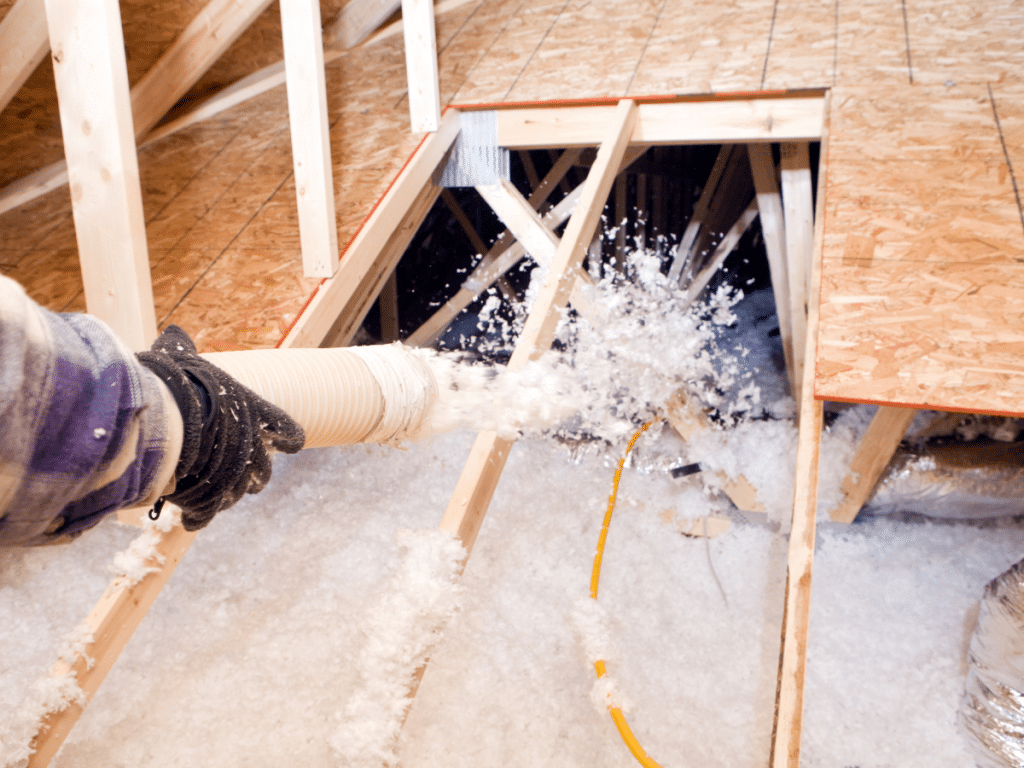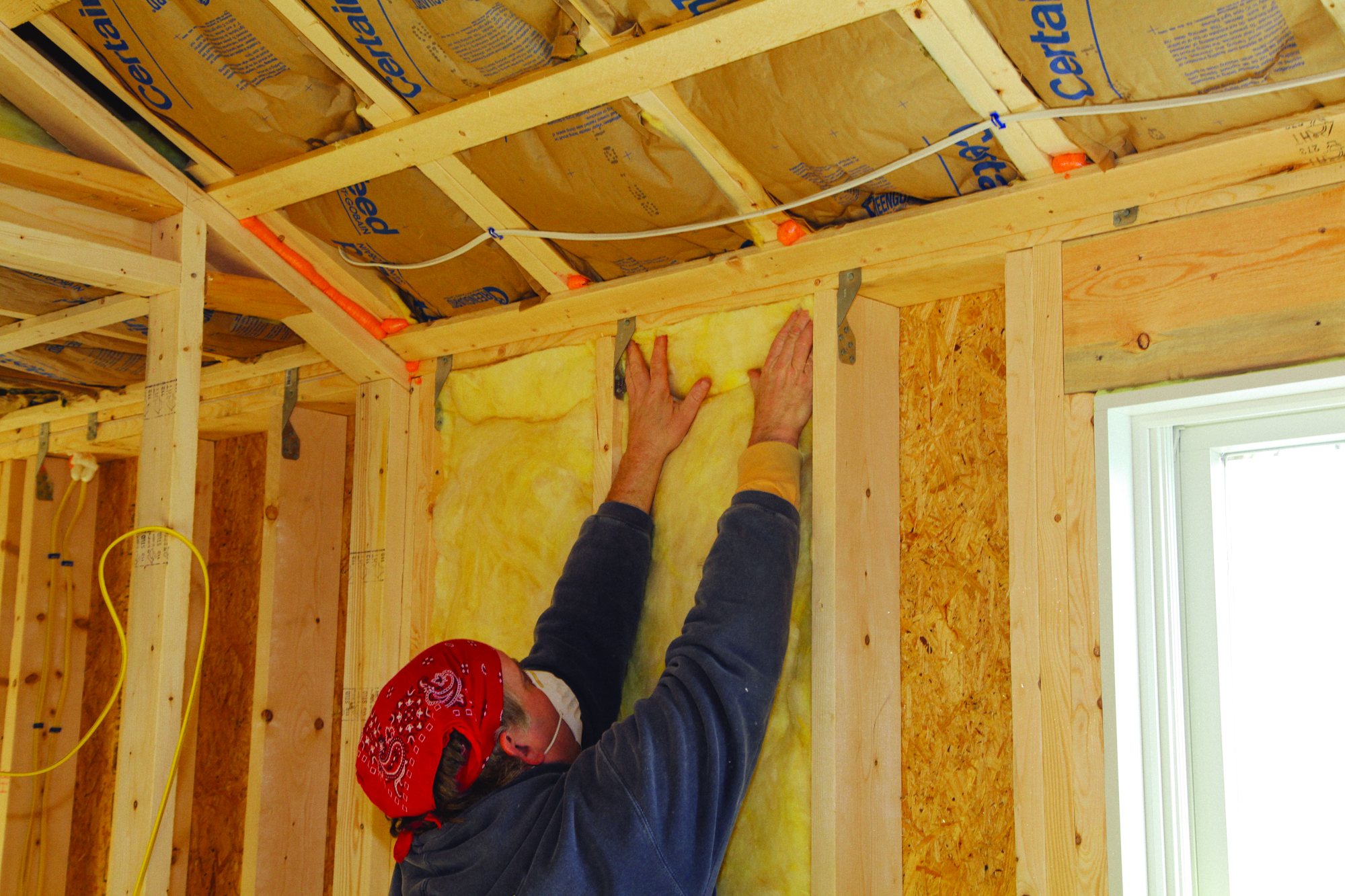Fiberglass insulation reduces long-term energy loss by creating a thermal barrier between conditioned interior spaces and the unregulated exterior environment. It prevents heat from escaping in winter and entering in summer, which directly lowers HVAC demand. This leads to lower utility bills, reduced system wear, and a more consistent indoor climate.
The savings from fiberglass insulation extend beyond monthly energy use. Its low upfront cost, long service life, and minimal maintenance requirements contribute to additional operational savings. When installed correctly, fiberglass insulation improves energy efficiency ratings and reduces the building’s environmental footprint. This article explains how fiberglass insulation delivers these benefits in real-world scenarios.
How Fiberglass Insulation Improves Energy Efficiency
Fiberglass insulation saves energy by resisting heat transfer through walls, ceilings, and floors. It traps air within millions of microscopic glass fibers, slowing the movement of heat and cold. In heating seasons, it retains warmth indoors. In cooling seasons, it blocks exterior heat from entering.
Unlike other insulation types that may degrade over time, fiberglass retains its thermal resistance for decades if undisturbed. This stability ensures predictable performance, year after year, which directly supports financial savings.

Direct Financial Benefits of Fiberglass Insulation
- Lowers heating and cooling costs by reducing thermal loss
- Extends the lifespan of HVAC systems by reducing operating load
- Minimizes temperature fluctuations and hot/cold zones
- Reduces maintenance needs from moisture condensation or mold
- Improves indoor comfort, reducing supplemental heating or cooling
Bonus Tip: Consistent R-value performance across walls, attics, and floors prevents overcompensation from HVAC units, which lowers mechanical strain and energy spikes.
Comparison of Insulation Types for Cost Savings
Fiberglass is often compared to other insulation types like cellulose, spray foam, and mineral wool. The following table shows how fiberglass stacks up in terms of long-term savings potential and basic performance metrics.
Comparison Table: Insulation Types and Savings Efficiency
| Insulation Type | Initial Cost | R-Value per Inch | Air Sealing Required | Energy Saving Potential | Longevity |
|---|---|---|---|---|---|
| Fiberglass Batts | Low | 2.9–3.8 | Yes (air barrier required) | Moderate to High | 30–50 years |
| Blown-In Fiberglass | Moderate | 2.2–2.7 | Yes | High in attics | 30–50 years |
| Spray Foam (Closed Cell) | High | 6.5–7.2 | Built-in | Very High | 50+ years |
| Cellulose | Moderate | 3.2–3.8 | Yes | High | 20–30 years |
| Mineral Wool | Moderate | 4.0–4.3 | Yes | Moderate | 30–50 years |
While spray foam offers a higher R-value, fiberglass delivers comparable savings over time when combined with proper air sealing. Its lower upfront cost makes it a more accessible solution for residential and commercial projects seeking budget-friendly energy control.
Technical Data on Fiberglass Insulation Performance
Fiberglass insulation provides reliable performance across multiple building zones. Its effectiveness depends on the density, thickness, and application method.
Technical Specifications Table
| Property | Value |
|---|---|
| Material Type | Glass fiber bonded with resin |
| R-Value Range | 2.9 to 4.3 per inch (depending on product type) |
| Fire Resistance | Non-combustible |
| Water Absorption | Low |
| Sound Absorption (NRC) | 0.70–0.90 (varies by thickness) |
| Durability | Does not degrade under normal conditions |
| Vapor Retardant | Requires facing or barrier |
| Typical Use Areas | Walls, attics, floors, ceilings |

Factors That Affect How Much You Save
The effectiveness of fiberglass insulation depends on several pre-installation and environmental conditions. To maximize energy savings, it’s important to assess the structure, climate, and air movement.
Key Factors That Impact Savings
Air Sealing Fiberglass does not stop air flow. To achieve full efficiency, the surrounding assembly must be properly sealed with caulking, foam, or membranes. Without air sealing, conditioned air escapes and lowers insulation performance.
Installation Quality Gaps, compression, and misalignment reduce R-value. Precision-cut batts that snugly fit stud cavities prevent thermal bypass and maintain efficiency.
Climate Zone Colder regions benefit more from higher R-values in attics and walls. Fiberglass can be layered to meet these zone-specific insulation levels.
Building Envelope Condition Older structures often require upgrades beyond insulation, including weatherproofing and vapor control. Addressing these areas helps insulation reach full potential.
Moisture Control Though fiberglass resists moisture, exposure can reduce effectiveness. Proper vapor barriers and ventilation are essential to protect R-values.
Bonus Tip: Conduct a blower door test before and after installation to measure air leakage. This confirms the effectiveness of combined air sealing and insulation strategies.
Long-Term Maintenance and Durability
Fiberglass insulation requires little to no maintenance. Unlike organic materials such as cellulose, fiberglass resists mold, insects, and decay. If installed in a dry, sealed cavity, it can last the life of the structure.
Durability Highlights
- Retains R-value over decades if left undisturbed
- Does not shrink or settle over time
- Fire-resistant and non-corrosive
- Can be removed or upgraded without specialized tools
In retrofit projects, fiberglass insulation offers flexibility—it can be removed for inspections or repairs and replaced without structural modifications.
Things to Consider Before Making a Decision
Before selecting fiberglass insulation, assess your building’s current condition and long-term performance goals. Savings will only be realized if the product is correctly installed and paired with good air sealing and envelope design.
Evaluate these factors before choosing fiberglass insulation:
- Location and Climate: Is your building in a zone where R-38 or higher is required? Fiberglass can be layered to meet code but may not suit extreme conditions without supplemental air sealing.
- Building Age and Envelope Quality: Older buildings with poor sealing or unknown wall construction may need a hybrid insulation solution.
- Access and Cavity Size: Some areas (e.g., tight crawlspaces) may be hard to insulate with batts and could benefit from blown-in options instead.
- Airflow and Moisture Risks: If moisture or air leakage is already a problem, consider using vapor retarders or upgrading to rigid foam in key areas.
How Fiberglass Insulation Saves You Money FAQ
Does fiberglass insulation reduce monthly energy bills?
Yes. By reducing heat transfer, fiberglass insulation lowers the demand on heating and cooling systems. This translates to consistent monthly savings in energy use.
Can fiberglass insulation last as long as spray foam?
In many cases, yes. When properly installed and protected from moisture, fiberglass insulation can last 30 to 50 years, which is comparable to other high-performance insulation types.
Is fiberglass insulation a good choice for hot climates?
Yes. It helps block outdoor heat from penetrating into cooled interior spaces, which reduces the need for extended air conditioning use.
Will fiberglass insulation help in a drafty house?
Only partially. Fiberglass resists heat transfer but does not stop air movement. Air sealing must be addressed before insulation can reach full performance.
What’s the difference between batts and blown-in fiberglass?
Batts are pre-cut panels installed in open cavities. Blown-in fiberglass is loose-fill and blown into attics or enclosed wall cavities. Both offer similar R-values but differ in application technique.
Make the Right Decision
Fiberglass insulation offers dependable energy savings by reducing heat flow, minimizing HVAC strain, and enhancing interior comfort. When properly installed with supporting air barriers, it delivers performance comparable to more expensive insulation systems. Assess your climate, air sealing needs, and long-term durability expectations before selecting fiberglass. Its low material cost, long service life, and ease of maintenance make it a cost-effective way to improve building performance for years to come.
Reviewer: Jack Parker, a spray foam professional with 7 years of experience, reviewed this post and helped improve sections dealing with brand clarity and customer communication.









